
On the occasion of Earth Day, the AIA's Committee on the Environment has unveiled the winners of the 2022 COTE Top Ten Awards for outstanding achievements in the fight against the climate crisis through building design.
Massachusetts projects dominated the field this year with three recognized buildings in Boston, Cambridge, and Medford.
This year's jury was chaired by Margaret Cavenagh, AIA, Studio Gang and also included Angela Brooks, FAIA, Brooks + Scarpa; Nakita Reed, AIA, NOMA, Quinn Evans Architects; and Z Smith, FAIA, EskewDumezRipple.
663 South Cooper, Memphis, Tennessee
archimania

Project excerpt: "The notion of converting a 1957 building and site into a net-zero energy, net-zero carbon project with progressive design hallmarks of resilience, accessibility, and wellness appears mythical. Developers cite cost and maintenance as the largest obstacles. Integrated design strategies help make aggressive goals more accessible, as tactics used within the design support one another in achieving a more comprehensive approach. Sustainability goals were held alongside goals of sound design, affordability, and research—forcing an integrated approach." ~ Read more about this project here.
Edwin M. Lee Apartments, San Francisco, California
LEDDY MAYTUM STACY Architects, Saida + Sullivan Design Partners
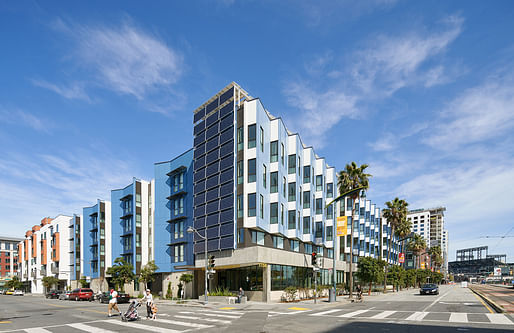
Project excerpt: "Edwin M. Lee Apartments, the first combined homeless veteran and low-income family development in San Francisco, has established a new definition for integrated, equitable, and resilient living. The design balances a civic scale with a feeling of home, responding to the Third Street corridor with a colorful serrated rainscreen façade while offering an oasis-like restorative landscape within. The dramatic solar canopy that cascades to the south entrance is a proud demonstration of low-carbon design." ~ Read more about this project here.
Iowa City Public Works, Iowa City, Iowa
Neumann Monson Architects

Project excerpt: "Iowa City is the state’s fifth-largest city (population 70,000+) and consistently ranks as a top Midwestern livable community. While leadership has shaped a strong community, a 2015 master plan revealed the city’s aged public works facilities were in disrepair, did not support modern equipment, and required significant safety upgrades. This project represents the ambitious first phase to consolidate services on a city-owned 14-acre site. The facility provides an adaptable state-of-the-art facility that improves safety, reduces operational costs, incorporates innovative sustainable energy features, and is sympathetic to its context. The balance of operational efficiencies with human well-being elevates this project typology." ~ Read more about this project here.
King Open/Cambridge Street Upper Schools & Community Complex, Cambridge, Massachusetts
Arrowstreet Inc., William Rawn Associates

Project excerpt: "There were two city goals for the project: to be the first net zero emissions building in the city demonstrating a new net zero zoning; and to address the climate risks outlined in the vulnerability assessment. The project should meet those goals while creating a healthy, equitable environment for the community. The result is a learning lab for sustainability, wellness, and resiliency. Through months of community engagement, the design team heard two needs: the importance of open space in this dense urban neighborhood; and Cambridge’s commitment to inclusion, community, and lifelong learning. The building program elements were designed to create a complex that is the heart of the neighborhood and welcomes all." ~ Read more about this project here.
Knox College Whitcomb Art Center, Galesburg, Illinois
Lake|Flato Architects

Project excerpt: "It was bluntly apparent that a lean budget would be the controlling parameter of this project alongside pedagogy and alongside high-sustainability aspirations. To create this aspirational facility within budget, every design move needed to serve multiple project goals. The team initiated a kickoff charrette to investigate these goals and seek out synergies between them. This was a truly integrated collaborative process wherein all stakeholders, design consultants, the contractor, and even some anticipated subcontractors and fabricators gathered for two intensive days of visioning, programming, constructibility explorations, and goal setting." ~ Read more about this project here.
Meyer Memorial Trust Headquarters, Portland, Oregon
LEVER Architecture
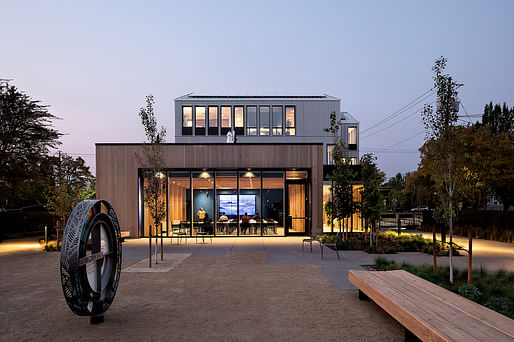
Project excerpt: "The Meyer Memorial Trust project argues that equity and sustainability are intrinsic to the idea of good design and should be celebrated in equal measure with architectural beauty. The client set this intention from the very start, working with the project team to foreground these issues and to establish rigorous equity and sustainability goals. This project brings an equity lens to every aspect of the process: The site was selected to create positive transformation without spurring gentrification; the project team was led by Black women and had high levels of diverse business participation; all levels of the foundation’s staff participated in the design process; the design centers equity by ensuring that access to views, light, and amenities are evenly distributed; the project’s artwork and signage celebrate stories of diversity and include diverse languages; the building’s local materials were sourced based on a criteria that considered benefit to BIPOC businesses and rural economic development." ~ Read more about this project here.
Roxbury Branch of the Boston Public Library Renovation, Boston, Massachusetts
Utile, Inc.

Project excerpt: "The central design concept of the renovation is to create a welcoming space for the Roxbury community by introducing natural light and warm materials while preserving the essential characteristics of the Brutalist-style concrete building. The high-ceilinged public spaces, the concrete structural frame exposed inside and outside, and the large expanses of glass block contributed to the pre-renovation branch being the highest energy user in the Boston Public Library system. Replacing the translucent glass block with a timber curtain wall transforms the library from an introverted bunker into a vibrant extroverted community hub integrated with its neighborhood. The size and spacing of the mullions were carefully studied via computer modeling to maximize natural light and visual comfort." ~ Read more about this project here.
Tufts University Science and Engineering Complex, Medford, Massachusetts
Payette
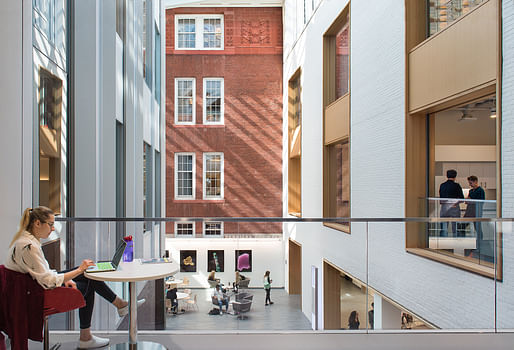
Project excerpt: "A delicate glass box floats effortlessly between two historic red brick bookends. Its taut skin cradles and reflects its surroundings, complements the brick, and lends quiet dignity to the existing buildings. The interdependent forms shape a nested series of interior and exterior spaces that heighten awareness of the existing buildings. The new Science and Engineering Complex (SEC) is the product of a strategic infill addition on a steeply sloped site that creates space for interdisciplinary research in biology, environmental science, and neuroscience while connecting two historic buildings to create a dynamic, community-focused, high-tech hub for open communication and cross-pollination. The resulting academic precinct addresses the institution’s desire for a critical mass of research and teaching space to support cross-departmental collaborations in an environmentally responsible manner." ~ Read more about this project here.
The following two projects were recognized for their "exceptional" post-occupancy performance data.
Lick-Wilmerding High School Historic Renovation & Expansion, San Francisco, California
EHDD
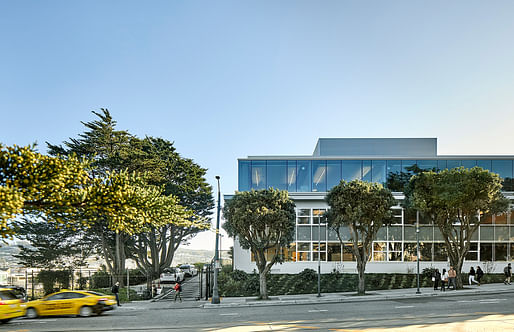
Project excerpt: "This major renovation and expansion of Lick-Wilmerding High School forefronts its legacy as an industrial arts school dedicated to public service. The school, with its motto of 'Head, heart, hands,' continually seeks to push the limits of academic excellence, civic engagement, and craft and technology. Both the design process and strategies echo this philosophy through the integration of a truly equitable community engagement process with high environmental goals that would result in the building being a model of urban sustainability, targeting deep carbon reductions through net zero energy design and the transformation of an existing building, preserving its historic fabric and becoming a dependable facility resource for the surrounding community." ~ Read more about this project here.
Louisiana Children's Museum, New Orleans, Louisiana
Mithun, with associate architect Waggonner & Ball
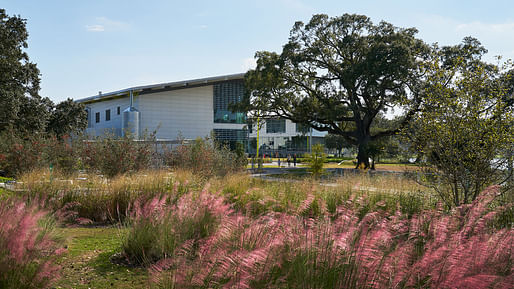
Project excerpt: "Following Hurricane Katrina, Louisiana Children’s Museum reframed its mission to address storm-related trauma and the state’s consistent ranking among the lowest 5% nationally for educational outcomes. The LCM developed a new model for children’s museums—one that combines environmental education and colocation of community resources with conventional children’s play elements—uniquely adapted to a new eight-acre site in New Orleans City Park. Connecting children to nature and bringing the environment into the museum experience were at the core of the learning framework. The integrated campus design optimizes the environmental assets of the site, which features mature live oak trees, a freshwater lagoon connected to Bayou St. John, and a resilience role as a local stormwater receiving area. The choreography of the visitor experience connects families with nature—moving through groves of live oaks, across water, through immersive exhibits, and into a courtyard and sensory gardens." ~ Read more about this project here.

Kinderspace: Architecture for Children's Development #2
Register by Thu, Jan 16, 2025
Submit by Mon, Jun 16, 2025

Land Art Generator Initiative 2025 Fiji: Climate Resilience for Island Communities
Register/Submit by Mon, May 5, 2025

Ceramics of Italy Tile Competition
Register/Submit by Fri, Feb 14, 2025

The Architect's Chair / Edition #3
Register by Wed, Jan 15, 2025
Submit by Tue, Feb 18, 2025
No Comments